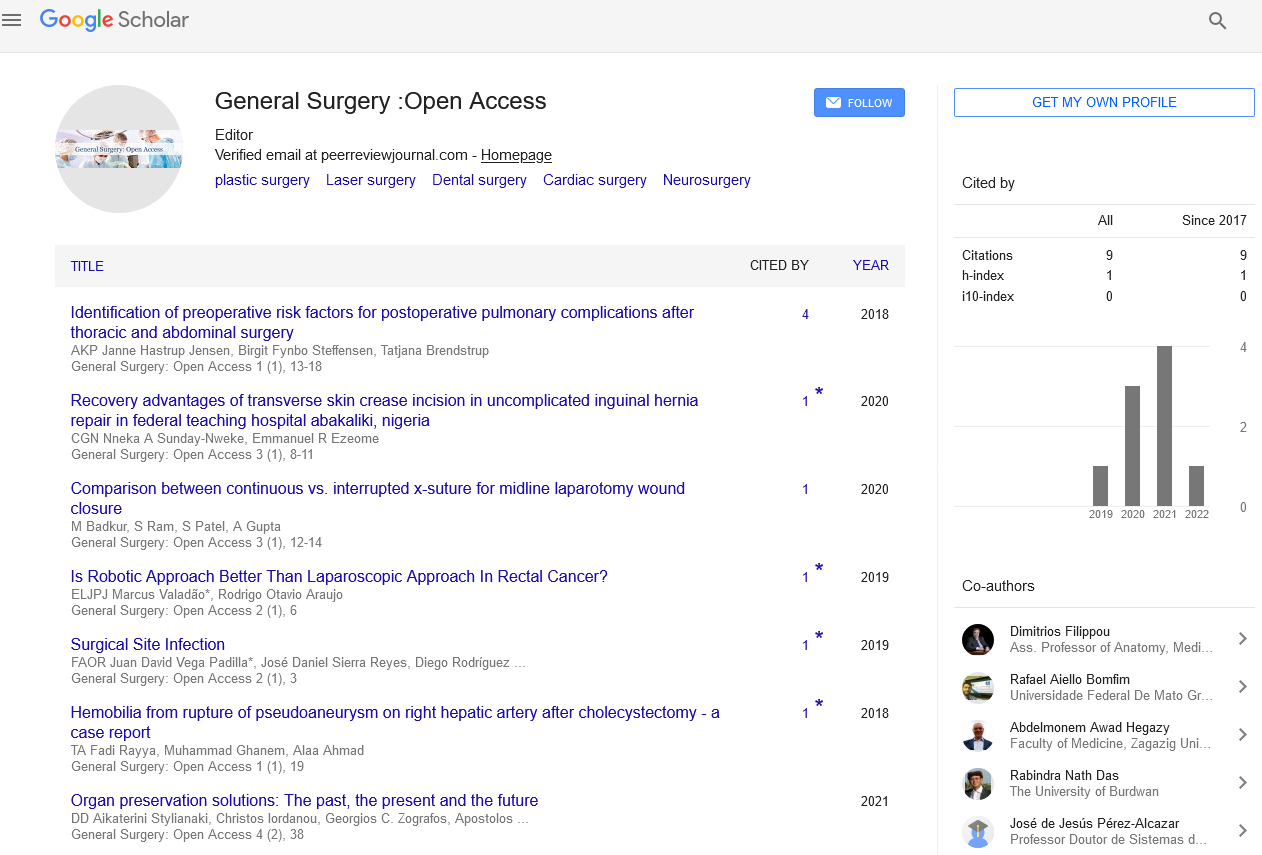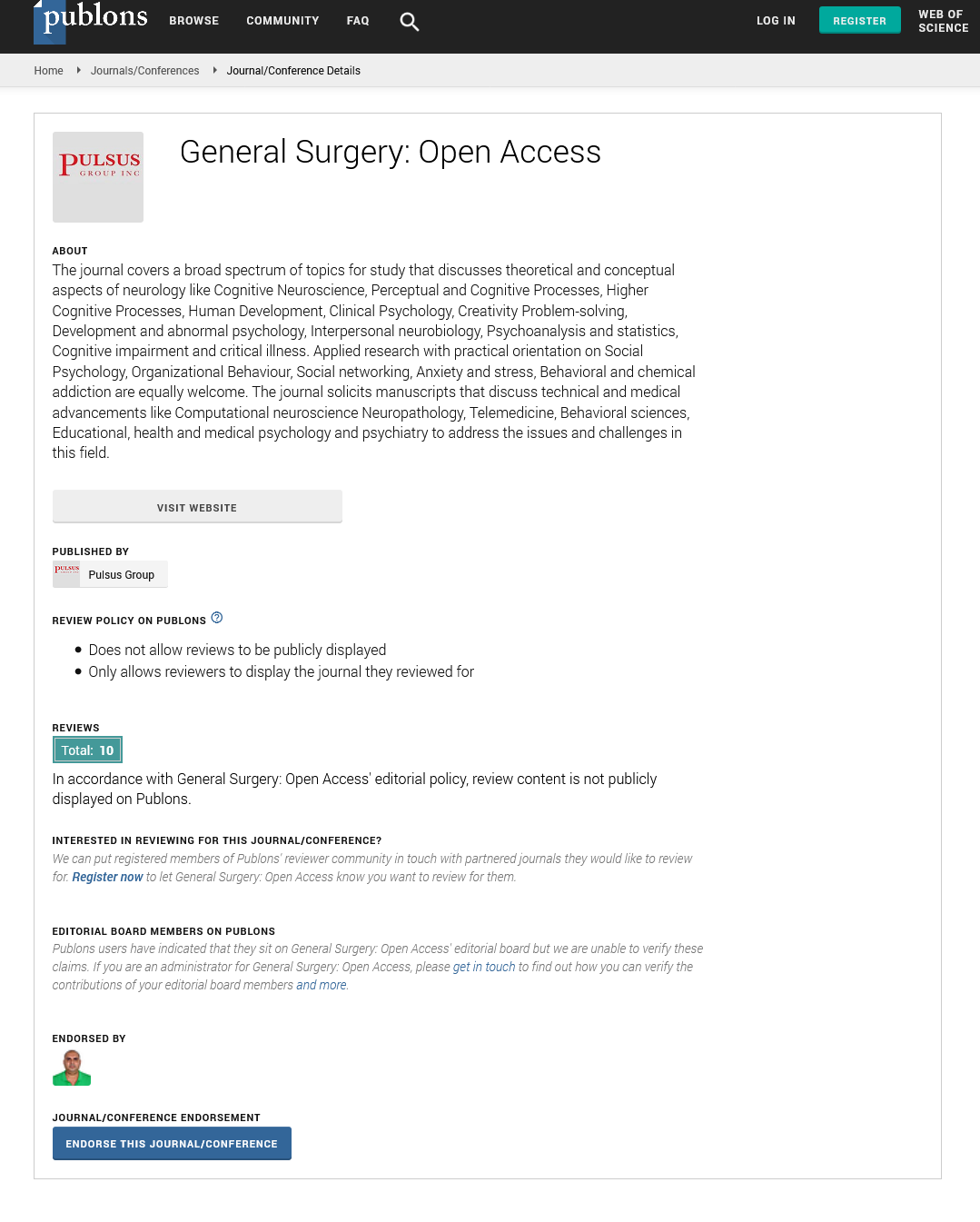Treatment for cholecystitis
Received: 01-Sep-2021 Accepted Date: Sep 15, 2021; Published: 22-Sep-2021
Citation: Jick S. Treatment for cholecystitis. Gen Surg: Open Access. 2021;4(5):17
This open-access article is distributed under the terms of the Creative Commons Attribution Non-Commercial License (CC BY-NC) (http://creativecommons.org/licenses/by-nc/4.0/), which permits reuse, distribution and reproduction of the article, provided that the original work is properly cited and the reuse is restricted to noncommercial purposes. For commercial reuse, contact reprints@pulsus.com
Description
Cholecystitis is an irritation of the gallbladder. Gallbladder is a little pearformed organ concealed under your liver in the upper right part of your midsection. The gallbladder's responsibility is to store bile a fat processing liquid made by the liver and to deliver it after you eat a feast. Cholecystitis as a rule creates when the bile gets caught in your gallbladder, and becomes contaminated with microorganisms. Bile gets caught when gallstones shut the progression of bile out from your gallbladder.
Intense cholecystitis is a condition of right upper quadrant agony, fever, and leukocytosis related with gallbladder aggravation. It ordinarily happens in patients with gallstones (i.e. intense acalculous cholecystitis), while calculus cholecystitis represents a minority (5 to 10 %) of cases. Complexities of intense cholecystitis incorporate gallbladder gangrene or hole, which can be perilous. Patients with intense cholecystitis generally present with serious and consistent stomach torment in the right upper quadrant or epigastrium, fever and leukocytosis. Cholecystectomy is the pillar of treatment for intense calculous cholecystitis. Over 95% of individuals with intense cholecystitis have gallstones. Agony starts in mid to upper right midsection and may spread to right shoulder bone or back. Agony is most grounded 15 to 20 minutes in the wake of eating and it proceeds. Agony that stays extreme is viewed as a health related crisis. Persistent cholecystitis implies you've had rehashed assaults of irritation and torment. Torment will in general be less serious and doesn't keep going as long as intense cholecystitis. The rehashed assaults are normally brought about by gallstones hindering the cystic pipe discontinuously. Depleting the gallbladder to treat will increase spread of the disease.
Treatment of cholecystitis relies upon the seriousness of the condition and the presence or nonappearance of inconveniences. Simple cases can frequently be treated on an outpatient premise; confounded cases might require a careful methodology. In patients who are unsteady, percutaneous trans hepatic cholecystectomy waste might be fitting. Anti-microbials might be given to oversee contamination. Patients conceded for cholecystitis ought to get nothing by mouth due to hopeful medical procedure. Be that as it may, in simple cholecystitis, a fluid or low-fat eating regimen might be proper until the hour of medical procedure. Recuperation from gallbladder medical procedure, when done laparoscopically, is normally ordinary. Likewise with any medical procedure there can be insignificant torment at the cut locales. Most patients are released from the clinic not long after the medical procedure, and don't need extra testing or intercessions. In the event that the medical procedure is done through a bigger injury (open a medical procedure) the recuperation can be increasingly slow more days in the emergency clinic. This medical procedure, called a cholecystectomy, is typically performed by making little (cuts) through the midsection to embed a laparoscope to see inside the mid-region and careful instruments to eliminate the gallbladder. The gallbladder is generally taken out inside 24 to 48 hours of confirmation. This system is called as percutaneous cholecystectomy, is generally saved for the people who are too sick to even think about going through a medical procedure.






